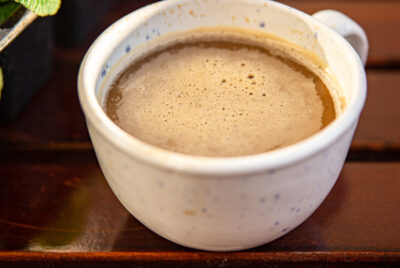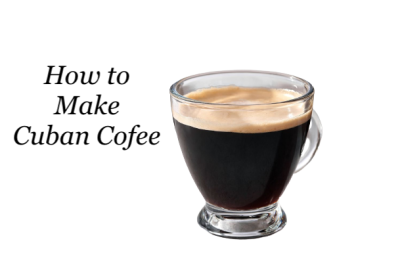How Much Coffee for 12 Cups: Brewing the Perfect Pot
As a passionate coffee lover, there’s nothing quite like starting the day with a delicious cup of coffee. But what if you’re brewing coffee for a larger group or a family gathering? Have you asked yourself “how much coffee for 12 cups?” Understanding the right coffee-to-water ratio is crucial for achieving a flavorful and satisfying pot of coffee.
In this guide, I’ll walk you through the process of brewing 12 cups of coffee, providing helpful suggestions and reasons for my recommendations.
Understanding Coffee-to-Water Ratio
When it comes to brewing coffee, the coffee-to-water ratio plays a vital role in determining the strength and taste of your brew. Achieving the perfect balance ensures that you extract the flavors from the coffee beans without overpowering or diluting them.
As a general guideline, covered before in how many coffee beans per cup, a coffee-to-water ratio of 1:15 to 1:18 is often recommended for a well-rounded cup of coffee.
Check out the Easyworkz Diego Stovetop Espresso Maker Stainless Steel Italian Coffee Machine Maker 12Cup 17.5 oz Induction Moka Pot
Calculating Coffee Amount for 12 Cups
Now, let’s dive into the calculation process for brewing 12 cups of coffee. The amount of coffee you’ll need depends on factors such as desired strength and personal preference. Here’s a breakdown of the process:
1) Determine the strength:
Assess whether you prefer a stronger or milder cup of coffee. This will help you adjust the amount of coffee accordingly.
2) Use the 1:15 ratio:
As a starting point, use the ratio of 1 gram of coffee to 15 grams of water. For 12 cups (which is approximately 60 ounces or 1774 milliliters), you’ll need around 80 grams of coffee.
3) Convert to tablespoons:
If you don’t have a kitchen scale, you can use tablespoons as a measurement. One tablespoon of coffee is approximately 5 to 7 grams. So, for 12 cups, you’ll need around 11 to 16 tablespoons of coffee.
Factors Influencing Coffee Strength
The strength of your coffee can significantly impact your overall brewing experience. It determines whether you’ll be savoring a robust and bold cup or enjoying a milder and more delicate flavor profile. Understanding the factors that influence coffee strength can help you fine-tune your brewing process and achieve the perfect balance. Let’s delve into these factors and unravel the secrets behind the strength of your favorite beverage:
1. Coffee Bean Origin and Varietal:
The origin of the coffee beans and the varietal used play a crucial role in determining the strength of your brew. Different regions produce beans with distinct flavor profiles and caffeine levels. For example, beans from South America tend to be milder and have a balanced taste, while those from Africa often exhibit brighter acidity and more pronounced flavors. By choosing beans from specific regions or varietals known for their strength, you can influence the overall intensity of your coffee.
2. Roast Level:
The roast level of your coffee beans significantly impacts the strength and flavor of the resulting brew. Darker roasts, such as French or Italian roasts, tend to create bolder and more intense flavors. These roasts often showcase smoky and caramelized notes, along with a fuller body. Lighter roasts, on the other hand, preserve more of the bean’s natural characteristics and offer a brighter and more nuanced taste profile. By selecting beans with the desired roast level, you can control the strength of your coffee.
3. Coffee-to-Water Ratio:
The coffee-to-water ratio is a critical factor in determining the strength of your brew. The ratio refers to the amount of coffee grounds used in relation to the volume of water. A higher ratio, such as using more coffee per cup, will result in a stronger brew, while a lower ratio will produce a milder cup. Experimenting with different ratios allows you to tailor the strength of your coffee to your personal preferences.
4. Grind Size and Extraction Time:
The size of the coffee grounds and the extraction time also affect the strength of your brew. Finely ground coffee extracts more quickly, resulting in a stronger cup, while coarser grounds require a longer extraction time and produce a milder brew. Adjusting the grind size and extraction time can help you fine-tune the strength and balance of your coffee.
5. Brew Method and Equipment:
The brew method and equipment you use can influence the strength of your coffee. Different brewing methods, such as drip brewing, French press, pour-over, or espresso, extract flavors differently. Each method has its own ideal strength range, and adjusting variables like water temperature and brewing time can further impact the strength. Understanding the nuances of your preferred brew method and equipment allows you to maximize control over the strength of your coffee.
6. Personal Taste Preferences:
Lastly, personal taste preferences play a significant role in determining the desired strength of your coffee. Some individuals prefer a bold and robust cup that wakes up their senses, while others prefer a milder and more delicate flavor. Experimenting with different variables and finding the strength that aligns with your taste buds is essential for crafting a cup of coffee that brings you joy and satisfaction.
By considering these factors and understanding how they contribute to the strength of your coffee, you can take control of your brewing process. Fine-tune each variable, explore different beans and roast levels, and experiment with the coffee-to-water ratio to find your perfect balance. Whether you crave a bold and invigorating cup or a gentle and nuanced experience, the secrets behind your cup of coffee are waiting to be unveiled. Embrace the journey of discovery and savor the endless possibilities of brewing coffee with just the right amount of strength.
Brewing Methods and Adjustments
Choosing the right brewing method for your coffee is key to unlocking its full flavor potential. Each brewing method offers a unique set of characteristics that influence the taste, aroma, and strength of your brew. By understanding the different methods and making appropriate adjustments, you can tailor your coffee brewing experience to suit your preferences. Let’s explore some popular brewing methods and the adjustments you can make to enhance your coffee enjoyment:
1. Drip Brewing:
Drip brewing is a widely used method that involves pouring hot water over coffee grounds in a paper or reusable filter. It is known for producing a clean and consistent cup of coffee. To optimize your drip brewing experience, consider the following adjustments:
-
- Grind Size: Adjusting the grind size can impact the extraction rate and the strength of your brew. Finer grounds extract more quickly, resulting in a stronger cup, while coarser grounds lead to a milder brew. Experiment with different grind sizes to find the ideal balance.
- Water Temperature: The water temperature plays a vital role in flavor extraction. Typically, water between 195°F (90°C) and 205°F (96°C) is recommended for drip brewing. Adjust the temperature slightly to fine-tune the flavor profile.
2. French Press:
The French press method, also known as a plunger or press pot, involves steeping coffee grounds in hot water and separating the brew using a mesh plunger. It produces a full-bodied cup with rich flavors. Consider these adjustments for a better French press brew:
-
- Grind Size: For French press, a coarser grind is preferable to avoid sediment in the cup. Adjust the grind size to achieve the desired strength and minimize grounds in your brew.
- Brewing Time: The brewing time influences the strength and flavor extraction. Start with a brewing time of around 4 minutes and adjust as needed to find your preferred balance of flavors.
3. Pour-Over:
Pour-over brewing is a manual method that involves pouring hot water over coffee grounds in a filter-lined cone or dripper. It allows for precise control over the brewing process. To enhance your pour-over brew, consider these adjustments:
-
- Bloom Phase: During the bloom phase, pour a small amount of water over the grounds and let them “bloom” for 30 seconds. This helps release trapped gases and enhances flavor extraction.
- Pouring Technique: Experiment with different pouring techniques, such as a slow circular motion or a steady pour, to ensure even saturation and optimal flavor extraction.
4. Espresso:
Espresso brewing is a specialized method that produces a concentrated shot of coffee. It requires high-pressure extraction using an espresso machine. While adjustments in espresso brewing can be more complex, consider the following factors:
-
- Grind Fineness: The grind size for espresso is much finer compared to other methods. Adjusting the fineness allows you to control the extraction time and flavor profile.
- Tamping Pressure: Consistent tamping pressure ensures even extraction. Experiment with different pressures to achieve the desired strength and flavor balance.
Remember, each brewing method offers its own unique characteristics, so don’t hesitate to experiment and make adjustments to suit your taste preferences. Additionally, factors like water quality, brew time, and coffee-to-water ratio can be further fine-tuned for a more personalized brewing experience.
Tips for Consistent and Delicious Coffee
Brewing a consistently delicious cup of coffee is a delightful art that can be mastered with a few essential tips. These tips will help you elevate your coffee brewing game, ensuring that each cup you brew is a flavorful and satisfying experience. Let’s explore some key strategies for achieving consistent and delicious coffee:
1. Start with Freshly Roasted Beans:
Investing in high-quality, freshly roasted coffee beans is the foundation of a great cup of coffee. Seek out local roasters or specialty coffee shops that offer freshly roasted beans. The freshness of the beans greatly impacts the flavors and aromas in your cup.
2. Grind Your Beans Just Before Brewing:
Grinding your coffee beans right before brewing is crucial for preserving the flavors and aromas. Invest in a burr grinder to achieve a consistent grind size and unlock the full potential of your beans. Avoid pre-ground coffee as it tends to lose its freshness quickly. Click here for information on how long coffee and coffee beans lasts in the fridge
3. Use Proper Storage:
Proper storage of coffee beans is essential for maintaining their freshness. Store your beans in an airtight container away from light, heat, and moisture. Avoid storing them in the refrigerator or freezer, as this can introduce moisture and alter the flavors.
4. Use Filtered Water:
The quality of water used in brewing coffee has a significant impact on the taste. Whenever possible, use filtered water to avoid any impurities or chlorine that can affect the flavor. Clean, fresh water ensures a clean and crisp taste in your cup.
5. Follow the Recommended Coffee-to-Water Ratio:
Using the right coffee-to-water ratio is crucial for achieving a well-balanced cup. Start with the recommended ratio of approximately 1:15 to 1:18 (1 gram of coffee to 15-18 grams of water). Adjust the ratio based on your personal taste preferences and the strength you desire.
6. Control Water Temperature:
Water temperature plays a vital role in flavor extraction. For most brewing methods, a water temperature between 195°F (90°C) and 205°F (96°C) is ideal. If the water is too hot, it can lead to over-extraction and bitterness. Too cool, and the flavors may not fully develop.
7. Master Your Brewing Technique:
Developing a consistent brewing technique is key to achieving consistent and delicious coffee. Pay attention to variables such as pour rate, brew time, and agitation during the brewing process. Practice and refine your technique to achieve the desired results.
8. Experiment with Brew Time:
The brew time can significantly impact the strength and flavors of your coffee. Depending on the brewing method, experiment with adjusting the brew time to find your preferred balance. Shorter brew times generally produce a milder cup, while longer brew times result in a bolder flavor.
9. Clean Your Equipment Regularly:
Keeping your coffee equipment clean is crucial for maintaining the quality and flavors of your brews. Residual coffee oils and buildup can affect the taste and result in off-flavors. Regularly clean your coffee grinder, brewer, and accessories according to the manufacturer’s instructions.
10. Take Notes and Learn from Each Brew:
Keep a coffee journal and take notes of your brewing experiments. Document the coffee beans used, grind size, water temperature, brew time, and any adjustments made. This will help you track your progress, replicate successful brews, and fine-tune your brewing process.
How Much Coffee for 12 Cups Conclusion
Brewing 12 cups of coffee doesn’t have to be a daunting task. By understanding the coffee-to-water ratio, considering factors that influence coffee strength, and making adjustments based on brewing methods, you can confidently brew a pot of flavorful and satisfying coffee.
Remember to experiment, take note of your preferences, and enjoy the process of finding the perfect balance for your taste. Cheers to brewing the perfect pot of coffee for your next gathering!
How Much Coffee for 12 Cups FAQs
How do I measure coffee for 12 cups without a scale? If you don’t have a kitchen scale, you can use tablespoons as a measurement. Approximately 1 tablespoon of coffee is equivalent to 5 to 7 grams. For 12 cups, you’ll need around 11 to 16 tablespoons of coffee.
Can I use pre-ground coffee for brewing 12 cups? Yes, pre-ground coffee can be used for brewing 12 cups. However, keep in mind that freshly ground coffee provides a more flavorful and aromatic cup. If using pre-ground coffee, ensure that it’s stored properly to maintain its freshness.
Does the type of coffee bean affect the measurement for 12 cups? Yes, the type of coffee bean can influence the measurement. Darker roasts and high-quality beans often have bolder flavors, requiring slightly less coffee per cup. Lighter roasts or lower-quality beans may require a bit more coffee to achieve the desired strength.
Can I adjust the coffee-to-water ratio based on personal taste preferences?
Absolutely! Adjusting the coffee-to-water ratio based on personal taste preferences is highly encouraged. The suggested ratios are starting points, but everyone’s palate is unique. If you prefer a stronger cup of coffee, you can increase the amount of coffee slightly. Conversely, if you prefer a milder flavor, you can decrease the amount of coffee. The key is to experiment and find the balance that suits your individual taste.
What if I want to make stronger or weaker coffee with 12 cups? If you want to make stronger coffee with 12 cups, you can increase the amount of coffee based on your preference. You can add a couple of extra tablespoons or grams to achieve a bolder flavor. On the other hand, if you prefer a milder brew, you can reduce the amount of coffee slightly. Remember to make small adjustments and taste as you go until you reach the desired strength.




